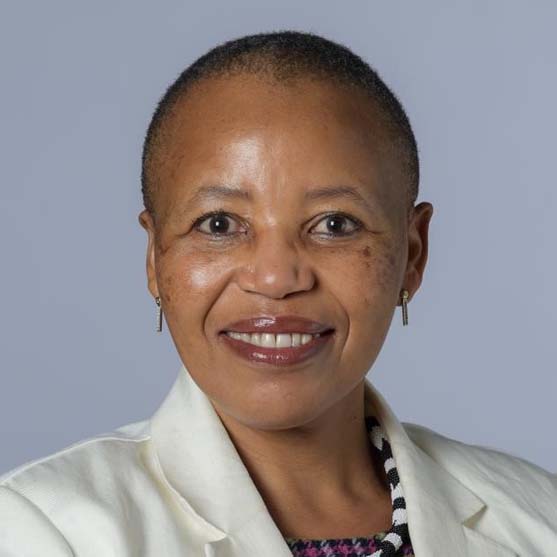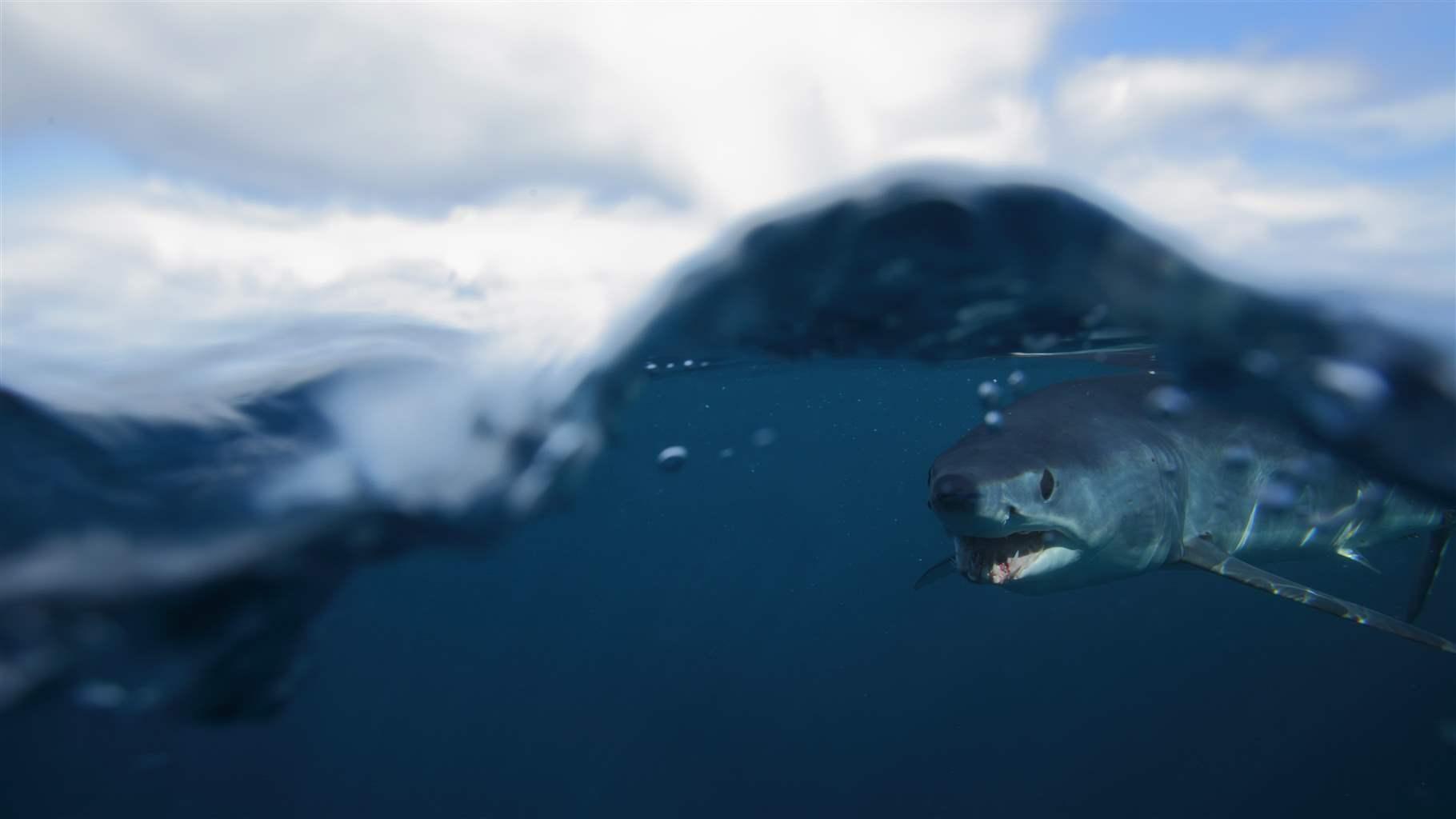High Seas Treaty Could Strengthen Maritime Protections in South Africa
South Africa’s ambassador to the United Nations: ‘Our fate is closely tied to the health of the ocean’
Editor's note: The content on this page was published before June 2023 when the United Nations adopted a legally binding treaty on the conservation and sustainable use of marine biodiversity in areas beyond national jurisdiction, sometimes referred to as the high seas treaty.
South Africa is well known for its iconic terrestrial species such as elephants, giraffes, and lions; after all, the country has more than 290 conservation parks and is home to almost 300 mammal species, about 860 bird species and 8,000 plant species.
But the country’s waters also teem with life, from the great white shark to the hemichordate, a worm-like invertebrate that’s found only in South African waters and could be a game-changer in the fight against cancer. Encompassing one of the largest exclusive economic zones in the world, South African waters harbor approximately 15% of the world’s marine species and are the site of the biggest annual migration on the planet, the annual sardine run.
Ambassador Mathu Joyini, the first woman to serve as South Africa’s ambassador and permanent representative to the United Nations, is working to ensure that science and equity remain front and center as negotiations for a high seas treaty at the U.N. near completion.
This interview has been edited for clarity and length.
Q: South Africa is surrounded by three oceans—the South Atlantic Ocean, the Indian Ocean and the Southern Ocean. How has this shaped your personal views and interaction with the ocean?
A: I grew up in a village in South Africa that was far away from the coast, so the ocean was a mystery to us. I thought of it as somewhere where you go to have fun, somewhere where you just go and be awestruck. So, luckily my parents, quite early on—I must have been about 6 years old at the time—
decided that we will take a trip to Durban. For a girl coming from a small village, the excitement around going to see the ocean for the first time and realizing how vast it was made this trip a memorable one. It was so good that my parents planned a trip to Cape Town the next year, so that we could see the ocean again. With a coastline of 3,000 kilometers, I soon realized how important the ocean is to our existence, and the various ways it contributes to South Africa’s economy and prosperity.
Q: South Africa was the first African country to celebrate Marine Protected Area (MPA) Day on Aug. 1, raising awareness on the vital role MPAs play in protecting the coastal communities that depend on a thriving ocean for their survival. Why do you think this matters?
A: South Africa—in particular our national legislature and research institutions—has a long tradition of protecting and respecting the environment. That’s true for the oceans and forests as well as Indigenous landscapes. And we work hard—and have had a lot of success—making sure that science informs environmental policies because our health and future depend on it. So, knowing that South Africa’s fate—and the fate of the world—is closely tied to the health of our ocean, we celebrated MPA Day last August. For us, it was important to let the world know that we can all help protect the ocean to ensure that the ocean continues to support us—and MPAs are one of the best ways to ensure ocean health.
Most importantly, what happens in the high seas does impact our fishermen and fisherwomen. Those communities have seen a reduction in marine life that the ocean provides. And we are lucky that we still have, for instance, the sardine run which is quite a marvel of nature. That happens every year, and we look forward to it.
We do have to be careful because we’re already facing some difficult challenges. If you look at what’s happening along the Durbin coastline, you realize that we must adhere to certain principles—and implement the policies—we put in place. Otherwise, both the natural resources and the livelihoods of coastal communities will be endangered. I imagine that for most of the African continent—if one looks and listens carefully—you see the threats to our coastlines and marine life across Africa.
Q: We’re at a critical juncture in the negotiations for an agreement to protect biodiversity in the waters beyond national jurisdiction—the part of the ocean that’s outside any one country’s jurisdiction, also known as the high seas. In fact, the last round of negotiations for a high seas treaty—which would protect marine biodiversity in areas beyond national jurisdiction, also known by the abbreviation BBNJ—is expected to take place this year. What do you think is at stake with these upcoming negotiations?
A: Most people agree that regulating the ocean should be based on sound knowledge, retrieved by scientific methods, and approved through peer review of other scientists before publication. Now, however, there are increasing calls to integrate knowledge from other sources, including traditional knowledge of Indigenous Peoples and Local Communities (IPLCs), and local knowledge of practitioners, civil society and the private sector. So that’s one important element of the negotiations. But there are others.
For instance, there’s a need for a stronger framework to develop and implement environmental impact Assessments (EIAs) in areas beyond national jurisdiction, and to create a clear EIA process—taking climate change and cumulative impacts into account. Also, regulations that govern access to marine genetic resources (MGRs) are needed for areas beyond national jurisdiction—and for sharing the benefits that result from their use—especially when it comes to the development of new drugs, for example. We don’t know the potential economic value of these genetic resources, but in the meantime, there have been robust discussions about the imbalance between developed and developing countries in undertaking marine research, and in using marine genetic resources for developing products.
Q: You’ve talked about the role of traditional knowledge from IPLCs in helping inform a global governance framework to protect the high seas. Why is this important?
A: Science is important, but so is technology because it’s an enabler and allows us to do many things. But at the end of the day, even with technology, what matters most is the people. That includes our Indigenous and local peoples that have been living in coastal areas for many years, and that know these areas like the back of their hand. These communities have had long and meaningful relationships with nature, ensuring they continue to thrive for generations to come. So, it is vital to find creative ways of merging science with these systems of knowledge that have worked for centuries.
Q: You are the first female South African ambassador to the United Nations and have championed equity throughout your career. How do you see equity play out during negotiations?
A: It is important. At the end of the day for this [treaty] to be implemented and to do so meaningfully, we need to think about financing and resources. So, from the perspective of South Africa and [the U.N. regional grouping] the African Group, equitable access to marine genetic resources is something we want to keep front and center during the negotiations. Currently, most developing countries are not able to access these resources due to lack of funding or technical capacity.
To address this imbalance, the Africa Group is proposing a process and structure to ensure that implementation takes equity into consideration when it comes to accessing MGRs, but also for benefit sharing, especially when it comes to the more developed countries.
We strongly believe this mechanism should be supported and will be instrumental in ensuring that African nations and other developing countries are able to participate fully in the implementation of the new high seas treaty.
Q: Are there any other areas of importance to your country and the African region that have yet to be addressed during the negotiations?
A: First, it is important that we make information about the BBNJ process available, including ways to ensure delegates can clearly understand what’s at stake given the highly technical nature of the negotiations. Second, I strongly believe there’s an opportunity for us to step back and better understand the categories of needs from developing countries, which must be addressed to ensure their meaningful participation during the negotiations. Lastly, financing is critical to ensure developing countries build the necessary capacity to effectively implement the agreement.
This piece was originally published on the AllAfrica website on June 8, 2022.
This video is hosted by YouTube. In order to view it, you must consent to the use of “Marketing Cookies” by updating your preferences in the Cookie Settings link below. View on YouTube
This video is hosted by YouTube. In order to view it, you must consent to the use of “Marketing Cookies” by updating your preferences in the Cookie Settings link below. View on YouTube


America’s Overdose Crisis
Sign up for our five-email course explaining the overdose crisis in America, the state of treatment access, and ways to improve care
Sign up











